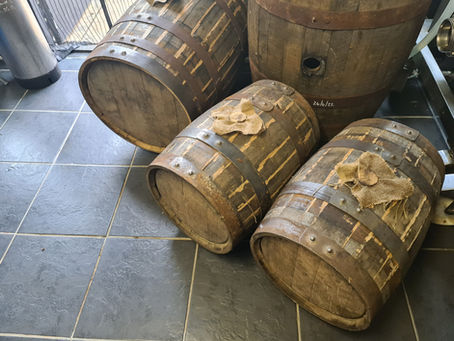
When it comes to aging spirits, the type of wood used in the cask can have a significant impact on the flavour, aroma, and overall quality of the final product. In the case of rum, there are several different varieties of wood that are commonly used for aging, each with its own unique characteristics and flavour profile. Whether we're talking Whiskey, Brandy, or Rum, the scope for different aging spirits in different species of wood is a minefield, and one that can be mind boggling at times. So we thought we'd lend a hand and give a short overview of what influence you may find with each of the main oak varieties of cask - especially its effects on your favourite rum!
1.American Oak
One of the most commonly used woods for aging rum is American oak. This type of wood is known for imparting a range of flavours, including vanilla, coconut, and caramel, which can complement the natural sweetness of rum. American oak casks are often used for aging bourbon, which can also influence the flavour of the rum that is aged in them.
American oak is sourced from the white oak tree, which is native to the United States. The wood is typically seasoned for at least two years before it is used to make casks. During this time, the wood dries out and the tannins and other flavour compounds are concentrated.
American oak casks are charred to varying degrees on the inside before they are filled with rum. Charring helps to open up the wood and create a layer of charcoal that can filter out impurities and add additional flavour to the rum.
The flavour profile of American oak is well-suited to sweet, smooth rums. The vanilla, coconut, and caramel notes are often associated with bourbon, which can create a pleasant harmony when the two spirits are blended together.
2. French Oak
French oak is another popular choice for aging rum, particularly for high-end or premium products. This type of wood is known for imparting a range of complex flavours, including spice, leather, and tobacco, which can add depth and complexity to the rum.
French oak is sourced from the Quercus robur tree, which is native to France. The wood is typically seasoned for at least three years before it is used to make casks. French oak has a tighter grain than American oak, which can help to minimize evaporation and produce a more concentrated flavour.
French oak casks are often toasted on the inside before they are filled with rum. Toasting helps to bring out the wood's natural sweetness and create a range of complex flavours.
The flavour profile of French oak is well-suited to complex, full-bodied rums. The spice, leather, and tobacco notes can create a rich and nuanced flavour profile that is well-suited to sipping and savouring.
3. Spanish Oak
Spanish oak, also known as European oak, is a popular choice for aging sherry, and is sometimes used for aging rum as well. This type of wood is known for its bold, assertive flavour profile, which can include notes of spice, dried fruit, and even smoke.
Spanish oak is sourced from the Quercus pyrenaica and Quercus petraea trees, which are native to Spain. The wood is typically seasoned for at least four years before it is used to make casks. Spanish oak has a coarse grain and high tannin content, which can create a strong and assertive flavour profile.
Spanish oak casks are often charred on the inside before they are filled with rum. Charring can help to soften the wood and create a more balanced flavour profile.
The flavour profile of Spanish oak is well-suited to bold, full-bodied rums. The strong flavours and aromas can stand up to the intensity of the rum and create a unique and memorable drinking experience.
4. Other Woods
While American, French, and Spanish oak are the most common woods used for aging rum, there are also other types of wood that can be used to impart unique flavours and characteristics. For example, some rum producers use casks made from exotic woods like teak, mahogany, or chestnut, which can add distinctive flavours and aromas to the finished product.
In conclusion, the choice of wood used for aging rum can have a significant impact on the flavour and quality of the final product. Each type of wood offers its own unique set of characteristics and flavour profiles, and the choice of wood will depend on the specific goals of the rum producer. Whether you prefer a smooth, sweet rum aged in American oak or a bold, complex rum aged in Spanish oak, there is a cask out there to suit your taste.




